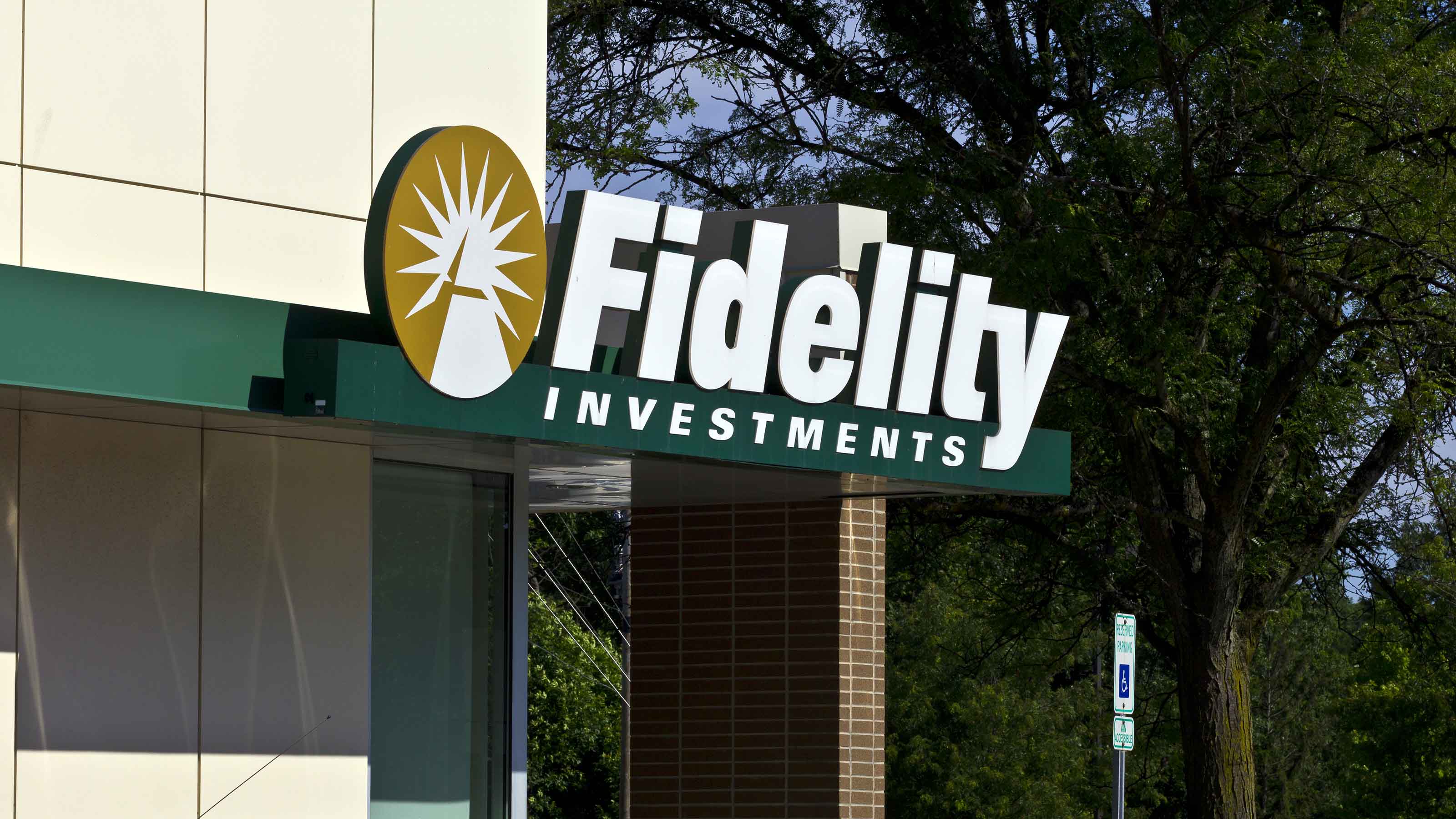9 Best Fidelity Mutual Funds to Buy Now
No matter your investing style, the best Fidelity mutual funds offer solid active management at relatively low cost.


Fidelity is one of the most iconic names on Wall Street, and Fidelity mutual funds are among the most respected investment vehicles on the planet.
The asset manager, established just after World War II, was one of the early leaders in the employer-led retirement plan space after the 401(k) made its debut roughly 40 years ago.
Chances are you've owned a Fidelity product in some account or another across your investing life.
When it comes to picking the best Fidelity mutual funds, there's no universal answer to which option is at the top of the list.
Investing always involves a level of personalization based on your risk profile, your time horizon and how much capital you have to invest.
That said, there are two general principles that can quickly separate the good from the bad. They include:
An established and liquid fund: Each of the mutual funds on this list has a minimum of $8 billion in assets under management, so they're likely not going anywhere anytime soon.
Reasonable fees: Mutual funds tend to be more expensive than exchange-traded funds, or ETFs, because of regulatory and record-keeping costs. The best Fidelity mutual funds have no additional transaction fees, and some have expense ratios as low as many of the best cheap ETFs.
The following options are among the best Fidelity mutual funds because they satisfy both standards. And there is no minimum to invest in any of the funds listed here.
You should always do your own research and make sure you're investing based on what's best for your personal situation.
These nine investments all are standouts that might work for you if you're looking for the best Fidelity mutual funds right now.
Data is as of January 28. Dividend yields represent the trailing 12-month yield, which is a standard measure for equity funds.

Fidelity 500 Index Fund
- Fund inception: 1988
- Assets under management: $619.4 billion
- Dividend yield: 1.3%
- Expenses: 0.015%, or $1.50 annually for every $10,000 invested
Many investors looking for the simplest way to invest in the U.S. stock market gravitate to the S&P 500, an index of the 500 largest companies on Wall Street.
The Fidelity 500 Index Fund (FXAIX, $210.80), like many similar index funds out there, is benchmarked to this fixed list of large-cap stocks.
This means that FXAIX is a simple way to access many of the big blue chip stocks you may be looking for, including Nvidia (NVDA) as well as Microsoft (MSFT) and Apple (AAPL). And since it's a fixed index instead of actively managed, it's incredibly cheap when it comes to annual fees.
The only major drawback is that the S&P 500 isn't particularly complicated or elegant. It's a list of the largest stocks, and it's weighted in a way that the bigger companies carry more influence than the smaller ones.
For instance, that trio of trillion-dollar tech stocks Nvidia, Microsoft and Apple represents more than 20% of the total portfolio all by themselves.
Still, FXAIX is one of the best Fidelity index funds because it's easy to understand, affordable, and a good way to generally play the movements of the broader stock market.

Fidelity Large Cap Growth Index Fund
- Fund inception: 2016
- Assets under management: $31.6 billion
- Dividend yield: 0.4%
- Expenses: 0.035%
Taking a slightly different approach than the Fidelity 500 Index Fund is the Fidelity Large Cap Growth Index Fund (FSPGX, $40.25).
As the name implies, this is an index fund of stocks with large market caps. However, FSPGX takes a more growth-oriented approach, pursuing companies with expanding sales and profits over established, slow-and-steady value stocks that might not have as much growth ahead of them.
The methodology of the Fidelity Large Cap Growth Index Fund is fairly simple: It takes the Russell 1000 Index of the largest U.S. stocks, then takes the top half of those based on the strength of growth metrics.
The result is a list of about 500 tech-heavy companies, with about 49% of assets in this sector. It all but ignores materials, real estate, energy and utility stocks, with less than 3% of assets collectively across those four sectors.
If you want to take a long-term approach to growth investing, FSPGX is one of the best Fidelity index funds to do so. There's admittedly a bit more risk in this tactical approach, but there is also more potential reward.
Consider that over the last five years, the fund has racked up a total return (price + dividends) of 136% compared to the S&P 500's total return of around 99%.

Fidelity Growth & Income Portfolio
- Fund inception: 1985
- Assets under management: $11.0 billion
- Dividend yield: 1.4%
- Expenses: 0.56%
Investors wanting to gain exposure to established and stable companies that have staying power in any market environment will want to check out the Fidelity Growth & Income Portfolio (FGRIX, $64.57).
This mutual fund includes software heavyweight Microsoft and AI powerhouse Nvidia as well as financial stock Wells Fargo (WFC), energy stock Exxon Mobil (XOM) and industrial stock GE Aerospace (GE) among its top holdings right now.
The strategy of this Fidelity mutual fund involves a focus on stocks that currently pay dividends as well as show potential for capital appreciation. This means lower exposure to tech stocks – only about 23% or so of the portfolio, compared with approximately 31% of the S&P 500 allocated to this sector – and more to sectors such as financials that make up roughly 20% vs an index weighting of around 14%.
It also means your investment isn't as focused on growth stocks. This is because firms that pay dividends are typically focused on giving cash back to shareholders rather than investing it in new products or expansion.
If you are concerned about overall economic growth trends in the near term or if you simply want to have the long-term peace of mind that comes with leading multinational stocks, FGRIX is one of the best Fidelity mutual funds for investors looking to reduce their risk profile.

Fidelity OTC Portfolio
- Fund inception: 1984
- Assets under management: $32.5 billion
- Dividend yield: 0.00%
- Expenses: 0.75%
While the previously mentioned Fidelity mutual funds focus on large and established stocks, the Fidelity OTC Portfolio (FOCPX, $21.95) allows investors exposure to innovative and non-traditional players.
The fund invests only in securities that are listed outside the New York Stock Exchange (NYSE). This includes the tech-heavy Nasdaq exchange that's home to names like e-commerce giant Amazon.com (AMZN) and Google parent Alphabet (GOOGL).
It also incorporates the over the counter (OTC) market, where securities are not listed on a major exchange. This includes privately held companies that are not even listed on public markets yet.
There's a lot of risk investing in more aggressive and development-stage companies, along with the Nasdaq-listed heavyweights on this list. But as a long-term investment, the growth potential these firms provide cannot be denied.
And with nearly 160 total positions, there's enough diversification that FOCPX can afford to swing and miss a few times along the way.

Fidelity Select Semiconductors Portfolio
- Fund inception: 1985
- Assets under management: $20.6 billion
- Dividend yield: 0.00%
- Expenses: 0.67%
If you're not afraid of a bit more risk or a bias toward the technology sector, the Fidelity Select Semiconductors Portfolio (FSELX, $32.41) is one of the oldest tech-driven mutual funds out there. With almost 40 years of trading under its belt, this multi-billion fund is well-established despite its very focused flavor.
Specifically, FSELX invests in companies engaged in the design, manufacture, servicing or sale of electronic components like semiconductors, circuit boards and other similar goods.
Top holdings at present include some of Wall Street's best semiconductor stocks like Nvidia, Broadcom (AVGO), Marvell Technology (MRVL), Taiwan Semiconductor Manufacturing (TSM) and NXP Semiconductors (NXPI).
In a digital age, chips exist in just about everything we buy – from smartphones to kitchen appliances to automobiles. If you don't want to research individual companies that have a particular product that's appealing right now, FSELX is one of the best Fidelity mutual funds to gain exposure to the space, with a diversified portfolio of about 40 global industry leaders.

Fidelity Investment Grade Bond Fund
- Fund inception: 1971
- Assets under management: $10.3 billion
- SEC yield: 4.6%*
- Expenses: 0.45%
For investors interested in the best Fidelity mutual funds for income, it's important to acknowledge that there's a great big world out there beyond stocks.
The Fidelity Investment Grade Bond Fund (FBNDX, $7.11) is a good example of this, with one of the firm's oldest and most respected ways to play fixed-income markets.
Bonds as an asset class are generally much more stable than stocks, meaning investors don't shoulder as much risk of losing principal value. This stability can also come with reliable yields that produce regular income.
The tradeoff is that bond funds don't experience the same growth as equity ones do – meaning you get a bit more certainty but less upside potential.
As the name implies, the Fidelity Investment Grade Bond fund focuses only on investment grade assets from the most credit-worthy entities.
Top issuers include the U.S. Treasury and government-backed mortgage entities like Fannie Mae along with top-rated corporations like JPMorgan Chase (JPM).
About 4,600 different bonds make up the current portfolio. Not only does this provide incredible diversity across the holdings. It also adds to the stability of this top Fidelity mutual fund.
* SEC yields reflect the interest earned after deducting fund expenses for the most recent 30-day period and are a standard measure for bond and preferred-stock funds.

Fidelity Floating Rate High Income Fund
- Fund inception: 2000
- Assets under management: $15.5 billion
- SEC yield: 7.1%
- Expenses: 0.73%
In a high-interest-rate environment, bond funds can be a challenging asset because they tend to fall when principal value rates go up. This is because old bonds that pay 2% are naturally less attractive than newer ones that pay 4% or more and are discounted by investors as a result.
But what if you don't have to be beholden to a fixed rate and instead can invest in instruments where the interest rate "floats" based on the market environment? That's what the Fidelity Floating Rate High Income Fund (FFRHX, $9.29) offers.
This top Fidelity fund invests in floating-rate loans. These are often lower-quality debt securities to smaller or troubled businesses rather than fixed-rate investment-grade debt to large and established firms and have the benefit of being linked to current and future interest rates.
That's particularly attractive to investors right now with the federal funds rate still elevated and uncertainty about monetary policy ahead of the next Fed meeting.
Top holdings in FFRHX include loans to camping and sporting goods retailer Great Outdoor Store and Las Vegas casino resort Golden Nugget. There's clearly risk in cyclical investments like these, but there's also the potential for a big-time payday as evidenced by the 30-day yield of more than 7%.
Income investors seeking out the best Fidelity mutual funds should definitely take a closer look at FFRHX.

Fidelity Capital & Income Fund
- Fund inception: 1977
- Assets under management: $13.5 billion
- SEC yield: 5.1%
- Expenses: 0.97%*
If you're really after yield and don't mind taking on a bit more risk in fixed-income markets, then the Fidelity Capital & Income Fund (FAGIX, $10.28) could be worth a look.
This top Fidelity mutual fund invests in a small amount of high-yield equity investments but mostly in distressed debt securities, including so-called "junk bonds" from lower-quality borrowers.
Investing in companies with troubled or uncertain financial conditions is definitely a risky game, but you can command a higher premium on your loans to these enterprises as a result.
And with a list of about 750 total holdings from issuers including Nvidia as well as digital bank Ally Financial (ALLY) and aerospace company TransDigm Group (TDG), there's a long list of diversified individual investments that can overcome one or two stumbles along the way.
And from an income perspective, the yield is more than four times that of the S&P 500. In other words, you'll have a much more generous payout rate that could make the higher risk profile worth it if you're in pursuit of bigger paydays.
* Includes 0.28% acquired fund fees and expenses

Fidelity Balanced Fund
- Fund inception: 1986
- Assets under management: $56.9 billion
- SEC yield: 2.0%
- Expenses: 0.47%
Not sure which of the prior Fidelity mutual funds is right for you or how to mix and match the stocks and bonds to build a diversified long-term portfolio? Then look to the Fidelity Balanced Fund (FBALX, $30.17), a one-stop shop for investors who want a single holding that does it all.
This top Fidelity fund invests about 60% of its total assets in stocks, led by familiar mega-cap tech companies like Apple, Nvidia, Microsoft, Alphabet and Amazon.com.
The other 40% of this fund is allocated towards bonds, primarily U.S. Treasury or agency debt issued by government-backed mortgage providers like Fannie Mae.
The fund does have a mandate to chase lower-quality debt securities or emerging-market bonds when its managers feel appropriate, so not all of those bonds are top-graded. Still, the vast majority tend to be.
There's no such thing as a one-size-fits-all approach to investing, so the FBALX portfolio might not be perfect for all investors.
If you have a relatively longer runway to grow your nest egg, for instance, you might want to consider a fund with a heavier allocation towards stocks. Or if you're in capital-preservation mode late into retirement, the added risk that a 60% allocation to stocks provides might not be right for you.
But, generally, this fund is popular because of its simplicity. You don't have to manage allocations or worry about multiple holdings. Just invest in this Fidelity fund and let it do the rest.
Learn more about FBALX at the Fidelity provider site.
Related content
Get Kiplinger Today newsletter — free
Profit and prosper with the best of Kiplinger's advice on investing, taxes, retirement, personal finance and much more. Delivered daily. Enter your email in the box and click Sign Me Up.

Jeff Reeves writes about equity markets and exchange-traded funds for Kiplinger. A veteran journalist with extensive capital markets experience, Jeff has written about Wall Street and investing since 2008. His work has appeared in numerous respected finance outlets, including CNBC, the Fox Business Network, the Wall Street Journal digital network, USA Today and CNN Money.
-
 10 Major AI Companies You Should Know
10 Major AI Companies You Should KnowThese 10 AI companies are at the forefront of machine learning. Find out how they’re driving innovation and jostling to be the biggest players in the game.
By Tom Taulli Published
-
 How Baby Boomers and Gen Xers Are Redefining Retirement Living
How Baby Boomers and Gen Xers Are Redefining Retirement LivingBoth generations need to embrace change and leverage real estate as a dynamic asset in their retirement planning. Here's how financial advisers can help, too.
By David Conti, CPRC Published
-
 Stock Market Today: Stocks Surge to Close a Volatile Week
Stock Market Today: Stocks Surge to Close a Volatile WeekIt was another day with a week's worth of both news and price action, but it ended on a strongly positive note.
By David Dittman Published
-
 Stock Market Today: Uncertainty Proliferates: Dow Loses 1,014 Points
Stock Market Today: Uncertainty Proliferates: Dow Loses 1,014 PointsWeaker-than-expected consumer inflation data wasn't enough to stabilize sentiment during another volatile day for financial markets.
By David Dittman Published
-
 Stock Market Today: Tariff Pause Triggers 3,000-Point Dow Rally
Stock Market Today: Tariff Pause Triggers 3,000-Point Dow RallyThe bond market is sending concerning signals as the Trump administration executes its rapid reordering of global trade relationships.
By David Dittman Published
-
 Stock Market Today: Tariff Talks Drive Another Up-and-Down Day
Stock Market Today: Tariff Talks Drive Another Up-and-Down DayTrade war negotiations are happening, but the "fear gauge" is gyrating, and investors, traders and speculators are still searching for signs of a bottom.
By David Dittman Published
-
 Stock Market Today: Trump Pushes Dow Into 2,600-Point Swing
Stock Market Today: Trump Pushes Dow Into 2,600-Point SwingTariffs and trade war weigh on prices across global financial markets, with little light at the end of the tunnel.
By David Dittman Published
-
 Stock Market Today: Dow Drops Another 2,231 Points to Hit a Correction
Stock Market Today: Dow Drops Another 2,231 Points to Hit a CorrectionThe Nasdaq Composite, meanwhile, entered a new bear market with its latest slide.
By Karee Venema Published
-
 Stock Market Today: Dow Dives 1,679 Points on Trump Tariff Shock
Stock Market Today: Dow Dives 1,679 Points on Trump Tariff ShockU.S. stocks lost roughly $3.1 trillion in market cap on Thursday – the biggest one-day decline since the start of the COVID-19 pandemic in March 2020.
By Karee Venema Published
-
 Stock Market Today: It's the Old Up-Down Again on Liberation Day
Stock Market Today: It's the Old Up-Down Again on Liberation DayMarkets look forward to what comes with the reordering of 80-year-old global trade relationships.
By David Dittman Published
